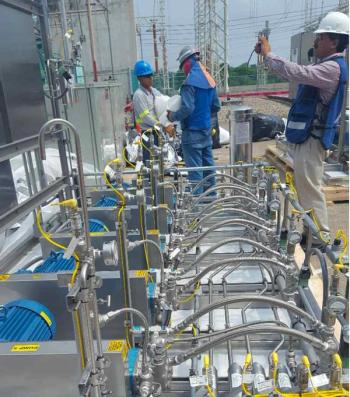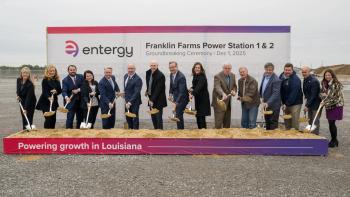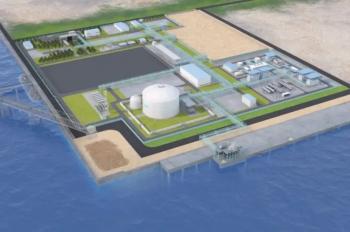
Google talks wind; suppliers argue turbine design
The American Wind Energy Association (AWEA) show wrapped up this week in California with more political posturing about the need for stable policy and the extension of wind tax incentives. They were backed up by a speaker from Google who outlined his company’s commitment to green energy. Google is even working on a proposed multi-million dollar offshore transmission project called Atlantic Wind Connection that would serve as a backbone for offshore wind projects off the East Coast. In addition, the company is investing in land-based wind projects, and directly purchases 215 megawatts of wind power.
“Energy drives our business, so we want it to be as clean as possible,” said Rick Needham, director of green business operations and strategy for Google. “The wind industry is particularly important in developing a clean energy economy at home and abroad.”
Closer to the heart of the wind industry, a panel of execs from the leading turbine manufacturers discussed a range of topics. When they had finished with policy and projections for this year (slightly up in 2011 and better in 2012 though not exceeding the 2009 peak of 10 GW), they focused on turbine technology and the buildup of the US supply chain. Five years ago, only about 20 percent of components were made in North America, that has jumped to more than 50 percent according to the representatives present from GE, Siemens, Clipper, Suzlon, Gamesa and Vestas. All are working on increasing that percentage.
“You need a local vendor base for quick turnaround, but as the turbine is still 70% steel, large casting and forging is more globally organized,” said Andy Cukurs, Chief Executive Officer for Suzlon North America.
Bob Gates, Senior Vice President for Commercial Operations at Clipper Windpower concurred.
“The large forging and casting capacity of the USA is much less than it was at the end of World War II,” said Gates. “While other countries may be able to build things cheaper, American strength is innovation – coming up with better ways to do things.”
The big debate concerned direct drive generators (DDG) versus geared turbines. Siemens was the only one present advocating DDG. The company has invested heavily in a direct drive model. After ten years of development it now has a 2.3 MW DDG turbine in production with 113 meter blade diameter.
“We need direct drive to lower the cost of energy, removing losses in efficiency by not having a gearbox and reducing complexity,” said Michael Revak, Vice President of Sales and Proposals at Siemens. “DDG has 50% less components than geared turbines.”
The other vendors, however, remained committed to geared designs along with taller towers, large rotors, SCADA monitoring and better site selection.
“Gearbox designs are fundamentally good, but it is the components and QC that cause the problems,” said Gates. “We are designing our turbines to cope work well in lower wind sites, while increasing reliability, and adding intelligence to head off problems before they require major repairs.”
Newsletter
Power your knowledge with the latest in turbine technology, engineering advances, and energy solutions—subscribe to Turbomachinery International today.





